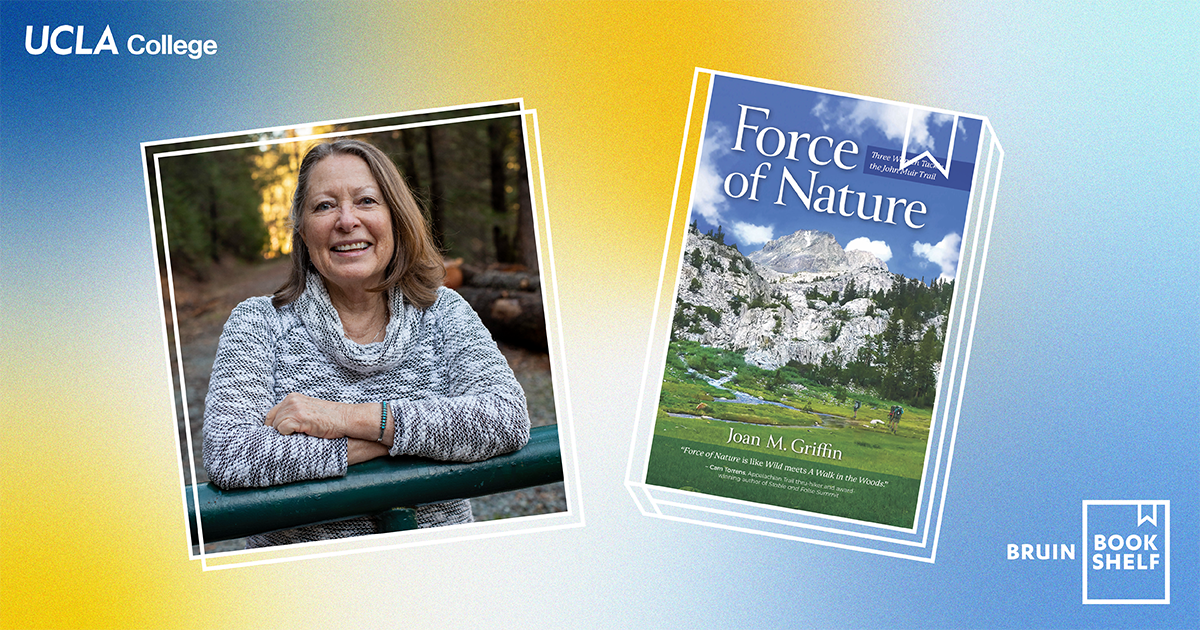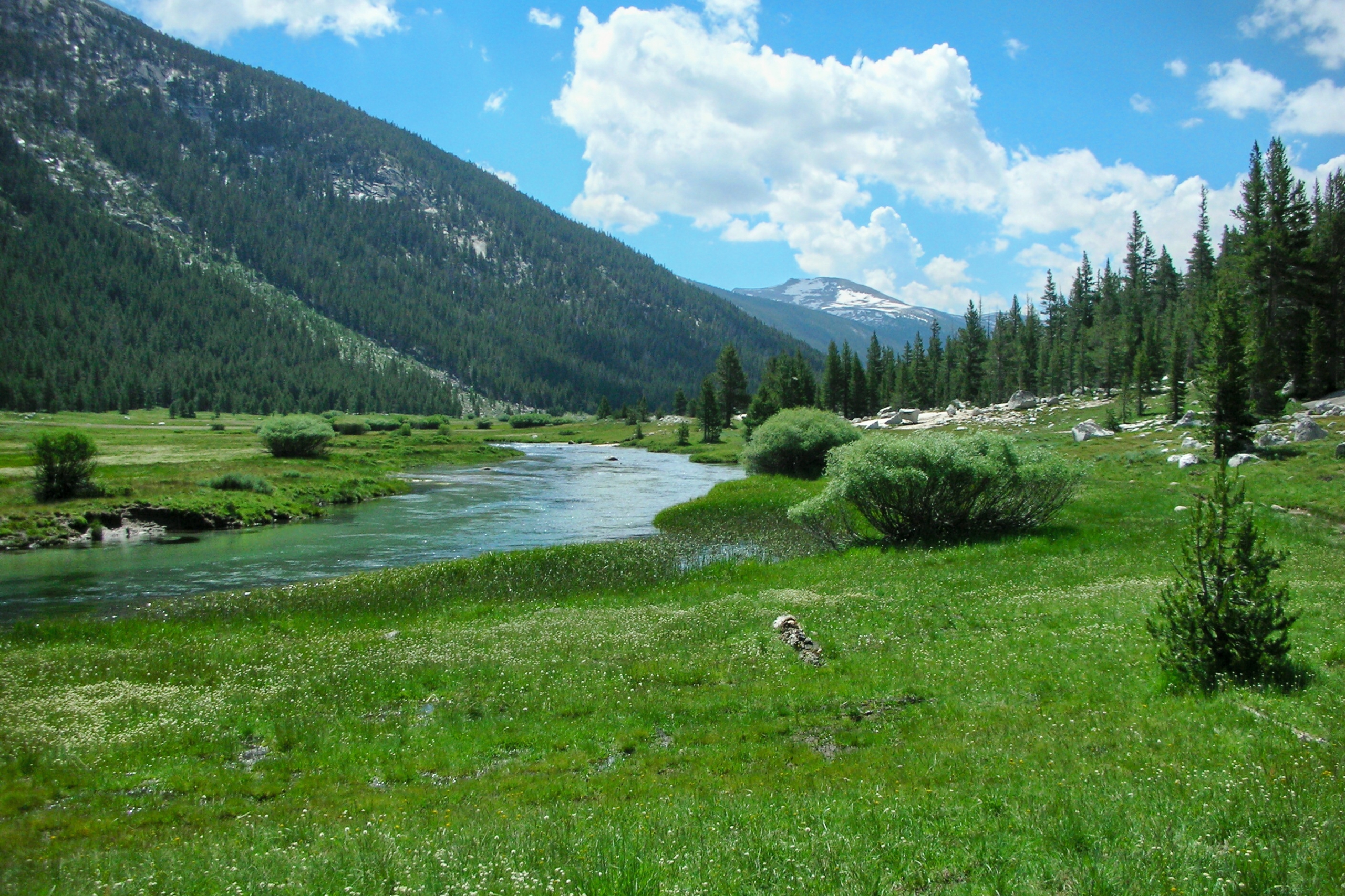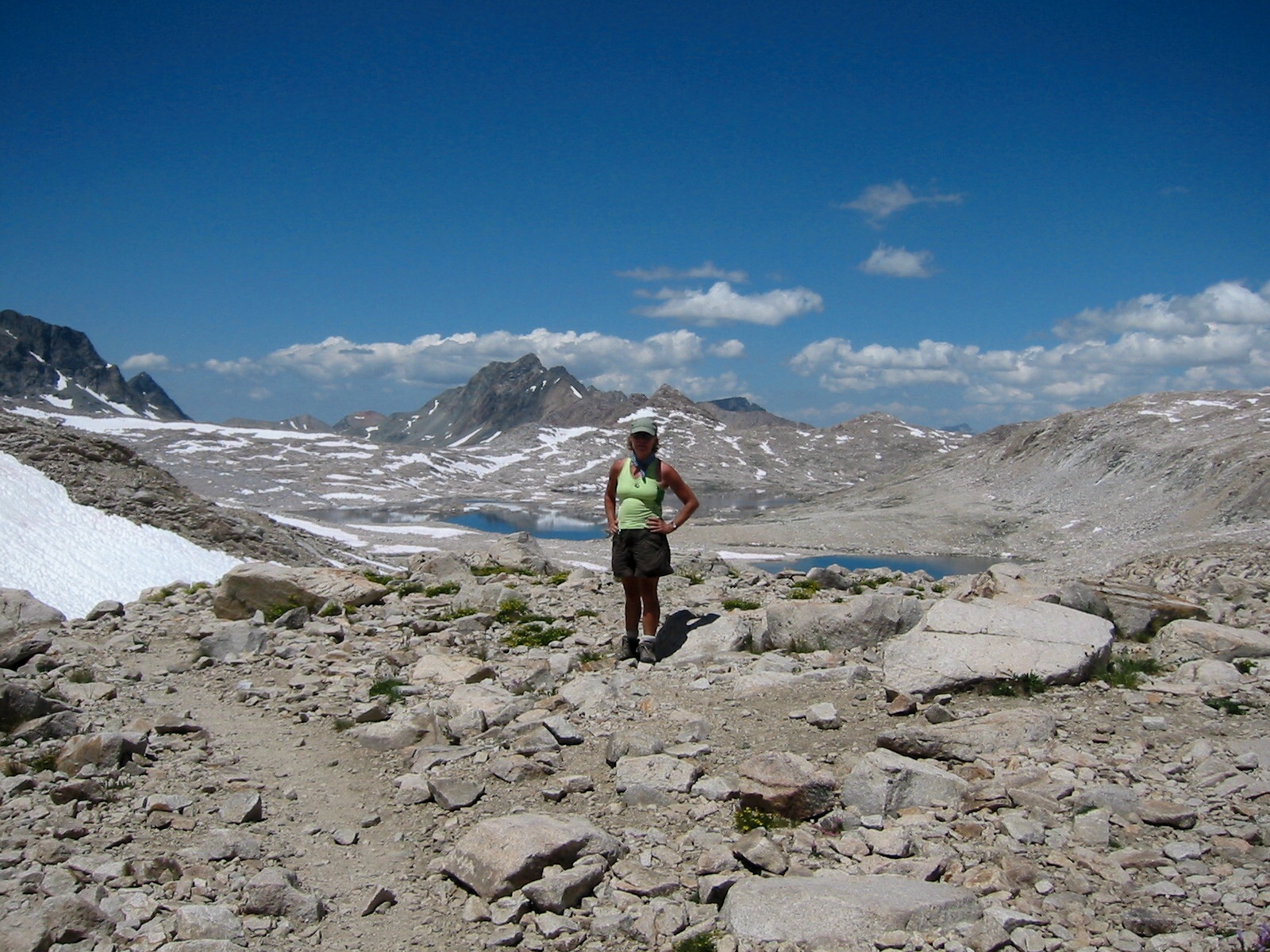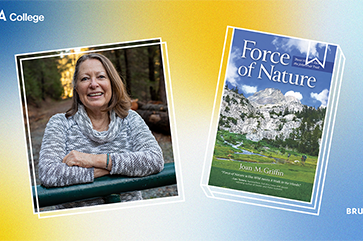Bruin Bookshelf Spotlight: Joan M. Griffin ’77
‘Force of Nature: Three Women Tackle the John Muir Trail’ by Joan M. Griffin ’77

By Alvaro Castillo | April 3, 2024
The John Muir Trail is a world-famous long-distance trail stretching from Yosemite Valley to Mount Whitney, the highest point in the contiguous United States. Finishing this 211-mile trek is a formidable feat for anyone — mountaineer or otherwise.
For UCLA College psychobiology alumna Joan M. Griffin ’77, completing this trail would mark the beginning of a decade-long adventure. Published in 2023, “Force of Nature: Three Women Tackle the John Muir Trail” follows Griffin and two friends who set out to hike “the most beautiful long-distance trail in the world.”
We spoke with Griffin to learn more about her alpine adventure and the path she followed to publication, guided by her curious and audacious Bruin spirit.
What inspired you to write this book?
Hiking the John Muir Trail was such an amazing experience that when I got back after a month in the Sierra wilderness, I wanted to tell everyone — but I found it difficult to put it into words. It was too big, too majestic, too grand. My descriptions fell far short. I decided the only way to convey the whole story was to tell the whole story, not just bits and pieces. So, I spent 10 years writing it down, polishing it. Now, people can go with me and experience the wild beauty of the environment.
What approach did you take to tell the “whole story”?
I wish I could say I am an author who sticks to a strict writing schedule, writing so many words a day or for so many hours a day, but I’m not. It took me 10 years to write my book, because I had to squeeze writing into an otherwise full life. But I have a couple ideas that might be of interest.
First, there’s a common stereotype of the lonely writer sitting up in a small garret apartment with a whiskey bottle close at hand. In movies, writing is described as an isolating endeavor. I think that couldn’t be further from the truth. I am a much better writer because of the time I spend with other writers. I belong to two small critique groups and one larger group. My writing friends and colleagues keep me accountable. They raise the bar of writing. They encourage me. My book would never have made it across the finish line without all those people on my team.
Second, my first draft of “Force of Nature” was 175,000 words! Stephen King famously calls the process of revising “killing your darlings” because it involves drastic cuts and leaving favorite bits and pieces on the cutting-room floor. Killing my darlings took over a year, and my book shed close to 50,000 words. Sometimes I cut a whole chapter or whole pages. Other times, I cut a sentence or a few words in a sentence. It can be a painful process, but in the end, the result is tighter, crisper, more impactful writing and a much better book.
 Griffin’s trek began in Lyell Canyon, a sub-alpine meadow in Yosemite National Park south of Tuolumne Meadows.
Griffin’s trek began in Lyell Canyon, a sub-alpine meadow in Yosemite National Park south of Tuolumne Meadows.
Which nature writers helped inspire “Force of Nature”?
If the top shelf of outdoor literature is populated by iconic authors like Wallace Stegner, Terry Tempest Williams, Annie Dillard and Jon Krakauer, then “Force of Nature” aspires to sit on the second shelf beside Cheryl Strayed’s “Wild,” Bill Bryson’s “A Walk in the Woods,” William Least Heat-Moon’s “Blue Highways,” and Helen Macdonald’s “Vesper Flights.”
Each chapter of “Force of Nature” begins with a quote; some, as you might expect, come from John Muir. But Thích Nhất Hạnh, Buddhist monk and author of “Peace Is Every Step,” gets in a word about walking meditation, and John O’Donohue, author of “Beauty,” speaks about the sense of awe that comes with time in nature. Clarissa Pinkola Estés, author of “Women Who Run with the Wolves,” contributes thoughts about the wild woman archetype. These quotes suggest the spiritual theme of connection with the majesty of nature that runs through the book.
Finally, during the 27 days on the trail, I read aloud a nightly bedtime story, chapters from “The Devil in the White City” by Erik Larson. The irony of having chosen that book is that the “devil,” the murderer who is central to that book, was a contemporary of John Muir, and would have been wreaking havoc in 1890s Chicago while Muir was hiking about in the Sierra Nevada wilderness, working to have Yosemite made into a national park. In addition, there is a further irony, which I cannot explain for fear of giving away one plot surprise, but suffice it to say that humans are more dangerous than bears, even on the JMT.
What would you want readers of “Force of Nature” to take away?
The biggest problem facing humanity in the 21st century is climate change and the accompanying loss of natural environments. I believe that the more people who have experiences out in nature, the more people who love the beauty of the wilderness, the more people will be willing to sacrifice and work to protect it. I hope books like mine will encourage people to get out into nature, to fall in love with the majesty of the natural world, to introduce their children to wild places and then work to protect the earth from destruction.
 After 16 days of hiking, Griffin found herself “on top of the world,” staring out from the summit of Muir Pass, which stands at 11,955 feet above sea level.
After 16 days of hiking, Griffin found herself “on top of the world,” staring out from the summit of Muir Pass, which stands at 11,955 feet above sea level.
Are there any lessons you learned at the UCLA College that were useful on the trail?
I will turn 70 on my next birthday, so my time at the UCLA College was a long time ago. Yet my experiences during my college years had a profound impact on who I became. I earned my undergraduate degree in psychobiology, which was a brand-new major in the mid-’70s. With one foot in the biology department and one in the psychology department, it allowed me to choose classes from a breadth of topics. I learned to write code, which launched me into my first career with IBM. I learned to be an independent leader, which helped me in my second career as an entrepreneur. Finally, I learned to love literature and good writing, which gave me the skills I needed for my third career in education, and now as an author. I’m a proud Bruin! I’m proud to say my alma mater is one of the finest universities in the nation.
What are you working on next?
In addition to promoting “Force of Nature” and teaching in the Osher Lifelong Learning Institute at Sierra College, I am working on a new book: another memoir, a much more personal story. I was adopted as an infant in the 1950s, something that was not uncommon back then. I always knew I was adopted, but it was a closed adoption, so no information about my birth parents was given to my “real” parents.
As an adult, I have now met both of my birth families, but the three sets of family legends surrounding my birth do not align. What I find fascinating about my story is that none of the tales my generation has heard match up, and the four people who made all those big decisions back in the ’50s are long gone, so there’s no one to ask anymore. What is the truth? How did the stigma of “out of wedlock” pregnancy and birth influence people’s perceptions and the stories they created to explain the facts? I think it will be interesting to work with my newly found half-siblings to research and to speculate. It’s kind of a “who am I?” story.
Learn more about Griffin’s adventure memoir.
If you are a member of the UCLA College community who has published a book, tell us about it.




